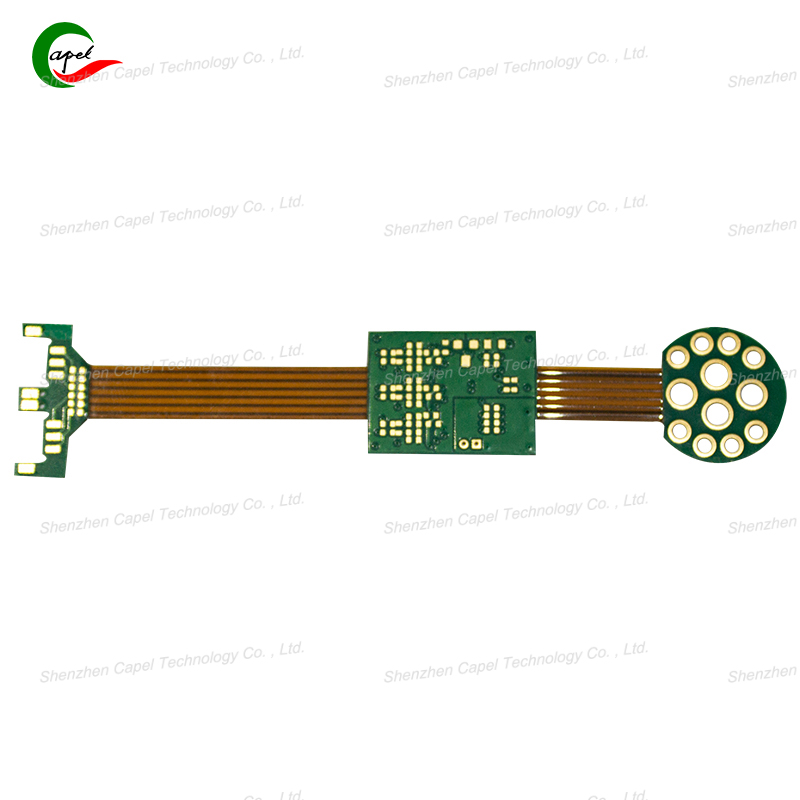Date: 2025-10-18
Creating serviceable rigid-flex PCB designs requires a different approach than traditional layout methods. Through our experience maintaining industrial automation systems and medical equipment, we've developed practical strategies that significantly reduce downtime during repairs and upgrades.
The Limitations of Conventional Approaches
Traditional PCB routing often creates maintenance nightmares. We've encountered situations where replacing a simple sensor required nearly two hours of work because technicians had to disassemble multiple unrelated components to access the necessary connections. The root problems typically include:
Interwoven wiring that forces technicians to handle more circuitry than necessary
Poorly positioned connectors hidden beneath components or in tight spaces
Inadequate identification that leads to reassembly errors
Inflexible routing that damages during service procedures
Fundamental Principles for Service-Oriented Design
Our approach centers on four key principles that have proven effective across multiple industries:
Functional grouping forms the foundation of serviceable designs. We organize all circuitry related to specific functions - such as power management, sensor interfaces, or processing cores - into distinct physical bundles. This segregation allows technicians to isolate and service individual subsystems without disturbing unrelated circuitry.
Connector selection and placement significantly impact serviceability. We standardize on connector families with quick-disconnect features and consistent pitch spacing. Mounting these connectors along board edges with adequate clearance for tools has reduced service times dramatically in our field deployments.
Thoughtful path planning prevents access issues. We maintain clear separation between different functional bundles and incorporate dedicated service channels that provide tool access without requiring excessive board flexing during maintenance procedures.
Cross-connections are minimized through centralized routing. Where possible, we implement hub-style architectures that consolidate inter-module connections rather than running point-to-point wiring throughout the flexible sections.
Practical Implementation Strategies
Several specific techniques have delivered measurable improvements in serviceability:
For rigid-flex transitions, we align functional bundles with their corresponding rigid sections and reinforce flexible portions with thin polyimide stiffeners. This approach has prevented damage during the repeated flexing that occurs during maintenance cycles.
Identification systems include both permanent laser markings and removable labels. We've found that color-coded wiring combined with clear functional descriptions reduces reassembly errors to near zero, even when different technicians perform the service work.
Connector protection has evolved through practical experience. Simple plastic guards and polarization features have prevented countless installation errors and physical damage incidents in field service environments.
Common Design Pitfalls
Through our design review process, we've identified several recurring issues:
Overcrowding flexible areas remains the most common mistake. Dense wiring bundles not only complicate service access but also compromise mechanical reliability during maintenance procedures.
Inconsistent connector selection creates unnecessary complexity. Standardizing on a limited set of connector types has simplified our service kits and reduced the tools required for field maintenance.
Poor connector placement continues to cause service delays. We've established clear guidelines for connector positioning that ensure accessibility without component removal.
Inadequate reinforcement leads to premature failure. Flexible sections subjected to repeated bending during service operations require proper stiffening to survive the product's intended lifecycle.
Validation Methods
We employ several testing methodologies to verify serviceability:
Timed service simulations help quantify maintenance efficiency. Our target of 15 minutes for module replacement has driven numerous design improvements and process optimizations.
Durability testing under repeated service cycles identifies potential failure points before products reach the field. This proactive approach has significantly reduced warranty claims related to service-induced damage.
Error testing with unfamiliar technicians provides valuable feedback on design intuitiveness. Simple improvements like polarization and clear labeling have dramatically reduced reassembly mistakes in these tests.
By implementing these strategies, we've achieved service time reductions of 70% or more compared to conventional designs. The most successful implementations emerge from considering service requirements throughout the design process rather than treating them as an afterthought. This approach has proven particularly valuable in applications where equipment downtime directly impacts operational costs, such as manufacturing lines and medical diagnostic equipment.
related link:
Capel manufacturing PCBs since 2009. Professional technology and high-precision Printed Circuit Boards involved in Medical, IOT, UAV, Aviation, Automotive, Aerospace, Industrial Control, Artificial Intelligence, Consumer Electronics etc..